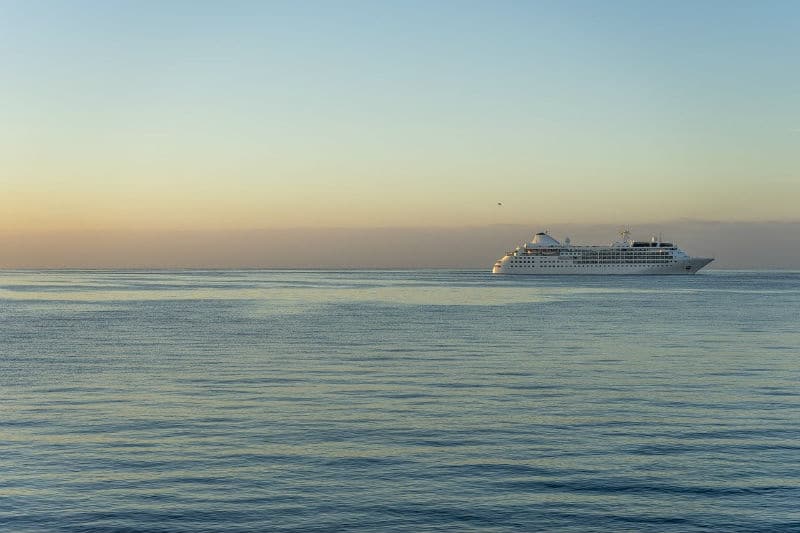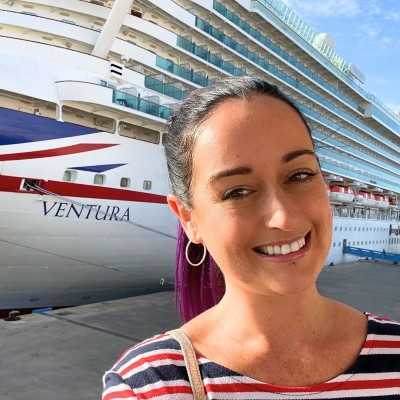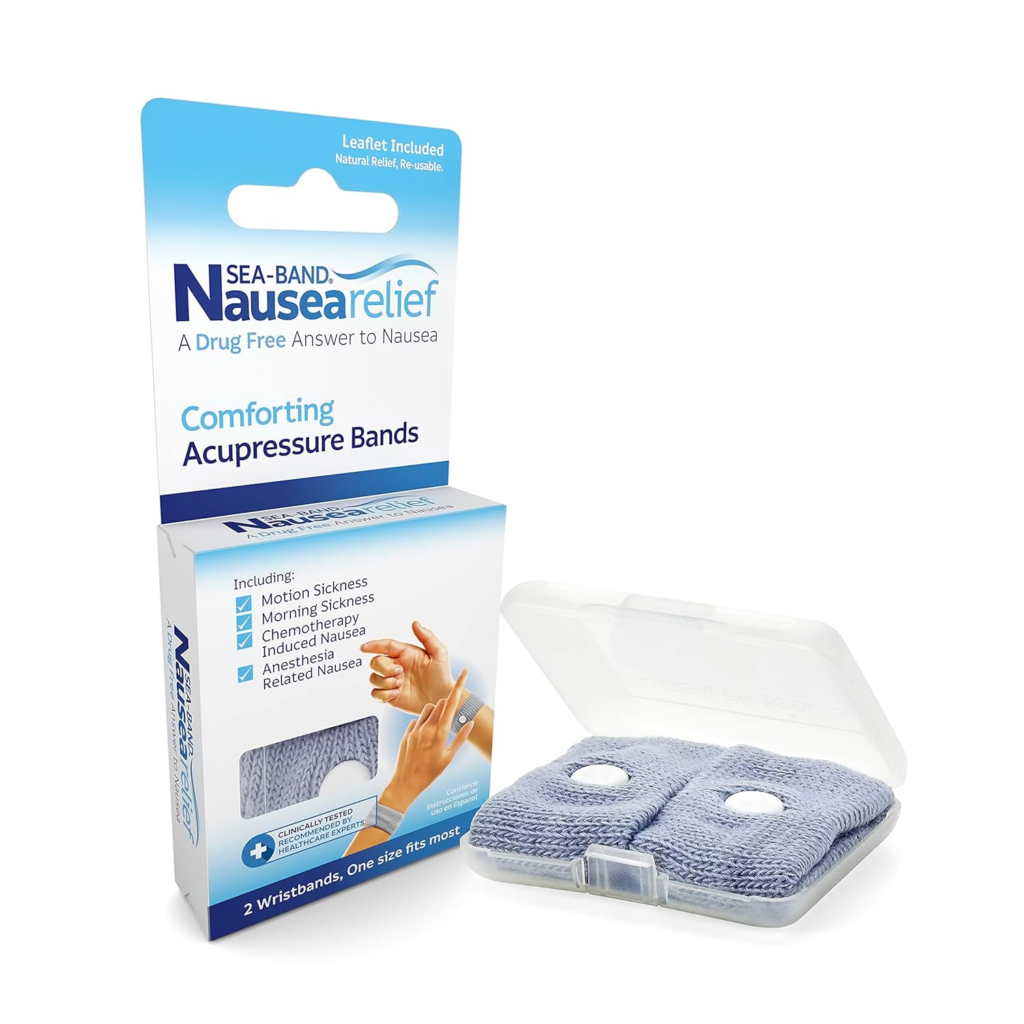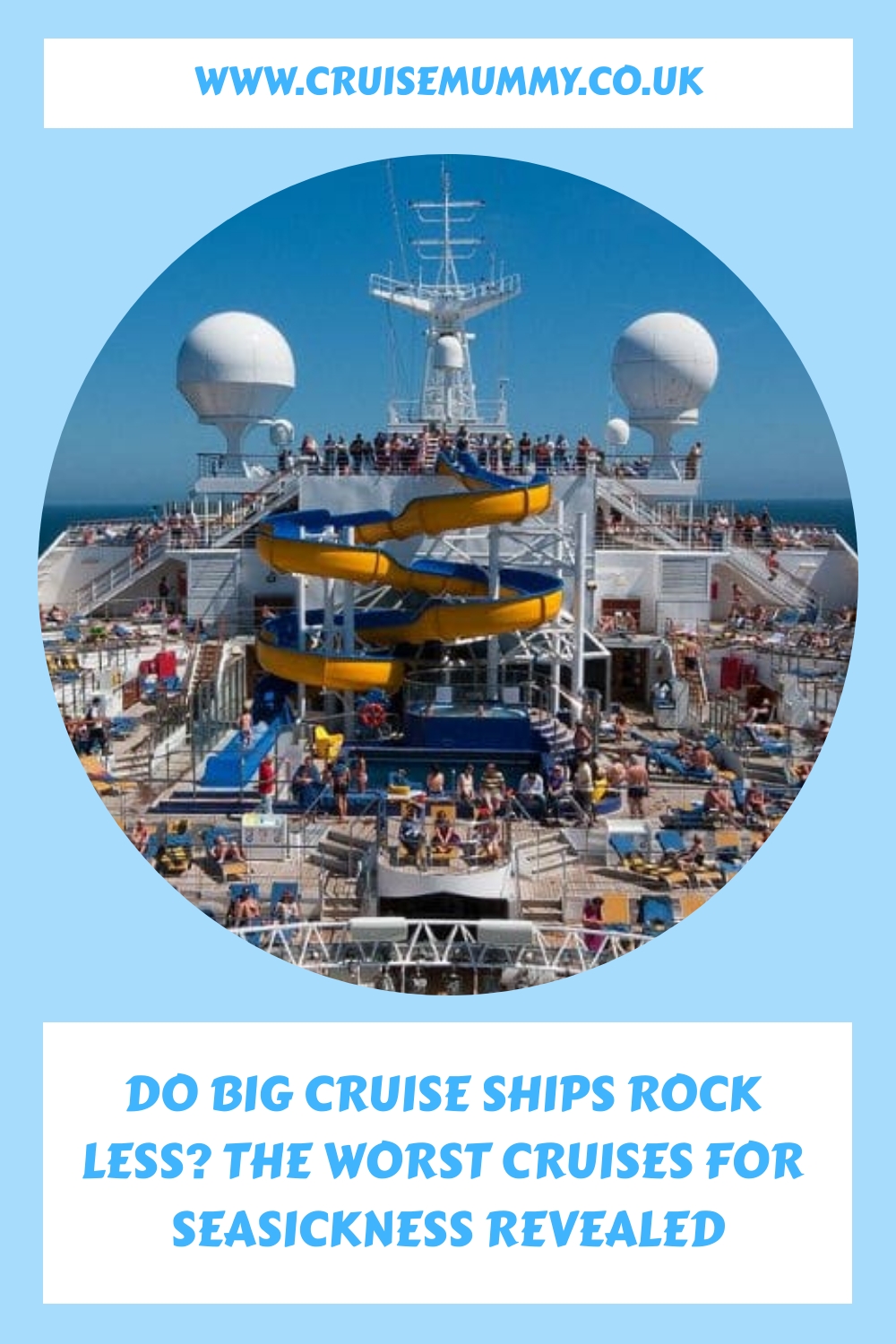If you’re prone to seasickness, you’ll probably want to put some thought into choosing the best ship for seasickness – one that isn’t going to ruin your cruise.
Many people assume that big cruise ships rock less. But, is bigger always better when cruise ships and seasickness are concerned?
The general rule is that bigger cruise ships require bigger waves to rock them. However, other factors such as stabilising technology, are important too.

- Why do we get motion sickness on a cruise?
- How bad is motion sickness on a cruise ship?
- Can you feel a cruise ship rock?
- What is considered rough seas for a cruise ship?
- The worst itineraries for seasickness
- Are small cruise ships worse for seasickness?
- How cruise ship stabilising technology helps
- Best cruise ships for seasickness
Why people get motion sickness/seasickness on a cruise
Do you feel motion sickness on a cruise ship? You’re not alone. Motion sickness is caused by a conflict between signals arriving in the brain from the inner ear, which detects motion.
When a cruise ship is rocking, your inner ear can send different signals to your brain from your eyes. Your eyes are telling your brain that everything is still, but your ears are telling your brain that you’re moving up and down or side to side. These confusing messages can make you feel sick.
This explains why one of the best cures for seasickness is to look out to sea. If you look towards the horizon, your eyes will also tell your brain that your body is moving, the signals will match and the sickness should subside.
For this reason, if you’re worried about seasickness, it might be a good idea to upgrade to a cabin with a balcony rather than a windowless inside cabin.

How bad can it be?
Seasickness isn’t fatal. But, nausea and vomiting associated with motion sickness can be very unpleasant and leave people bed-bound for periods of time.
Seasickness is different for everyone. Most people don’t suffer from it at all. Others may experience it severely.
If you do feel seasick, lying down in bed is probably the worst thing you can do. If you can muster the courage to head up to the top deck and look out to sea or walk a few laps of the promenade deck, you’ll likely feel much better.
If that doesn’t work, cruise ships will give you seasickness pills free of charge, or if you’re really struggling you may be offered a seasickness injection. Other, more natural remedies include eating green apples or you can buy acupressure wristbands on Amazon.
You can (sometimes) feel the ship moving but it depends
Sometimes, you can feel a cruise ship rock, but that very much depends on the weather, and specifically, the size of the waves. If the sea is flat you will feel no movement at all. You can’t get seasick on a river cruise.
But can you feel the waves on a cruise ship? Not when they’re small.
Cruise ships can easily handle waves that are over 12 feet high. However, with waves of this height, you may begin to feel the ship rock and if you’re prone to seasickness you may start to look for relief.
Rough seas defined and explained
The sea is considered to be rough when the waves are more than eight feet high. If the waves of over 13 feet, then the sea is considered to be ‘very rough’. This comes from the Douglas sea scale which is a simple way of measuring the height of the waves.
The Douglas Sea Scale
| Degree | Height (ft) | Description |
|---|---|---|
| 0 | no waves | Calm (Glassy) |
| 1 | 0.00–0.33 | Calm (rippled) |
| 2 | 0.33–1.64 | Smooth |
| 3 | 1.6–4.1 | Slight |
| 4 | 4.1–8.2 | Moderate |
| 5 | 8.2–13.1 | Rough |
| 6 | 13.1–19.7 | Very rough |
| 7 | 19.7–29.5 | High |
| 8 | 29.5–45.9 | Very high |
| 9 | 45.9+ | Phenomenal |
On very rough seas, with waves of 13 feet or more, the outer decks may be closed for safety reasons in high winds and, if needed, the ship will navigate out of the storm, possibly changing itinerary.

The worst itineraries for seasickness
When choosing a cruise, take a look at how many consecutive days you’re at sea according to the itinerary.
Itineraries with more than two consecutive sea days usually mean that the ship will be heading out into open water, far away from coastlines, which can be where the worst weather happens. It can often be windier the further out to sea you go, which makes for higher waves, meaning that the ships will rock more.
Transatlantic (Europe to America) and Transpacific (America to Australia or Asia) itineraries will have the most days at sea and you’re likely to feel the motion the most.
If you are prone to seasickness, look out for itineraries that have no sea days. Getting off the ship in port every day will make you feel much better.
Read more: The 8 Roughest Seas For Cruise Ships
You’ll usually feel the motion more on a smaller ship
As a general rule, you’ll feel movement more on smaller ships. This is because they are moved more easily by the waves.
People often feel sick on ferries. The largest ferries are roughly the same size as a small cruise ship, but less than a third of the size (gross tonnage) of the largest cruise ships.
Read more: How big is a cruise ship?
If you want to avoid seasickness, you may want to avoid the smallest cruise ships. But, you might not experience much difference between a medium-sized and a large ship. Anything over 2,000 passengers should be large enough not to rock too much.
There is tech to help!
The newer cruise ships have impressive stabilising technology which works to reduce the movement caused by waves. On some older cruise ships, the technology isn’t as advanced, so they are more prone to rocking.
If you want to avoid feeling sick on your cruise, as well as choosing a fairly large ship, you should also look for one of the newer ships.
All cruise ships will have some sort of stabilisers. On older ships, these may be fixed fins and bilge keels which counter the rolling pressure by providing resistance to the turbulent water.
Newer cruise ships use gyroscopic stabilisers. These state-of-the-art fins are adjusted by an onboard computer according to the sea conditions. This video explains more…
Cruise ship stabilisers can eliminate about 85% of the roll (the side to side rocking motion), but unfortunately, they do nothing to eliminate pitching (the up and down motion). To counter this, cruise ships are designed with a long narrow bow to cut through the waves rather than climb them.
The best ships – top tips
If you want the best cruise ship for preventing motion sickness, you should follow these tips:
- Choose a ship that has at least 2,000 passengers
- Choose a ship that was built in the last 10 years
- Choose an itinerary that has no consecutive sea days
- Choose a balcony cabin on a low deck in the mid-section of the ship
Please don’t let any fears of getting sick ruin your cruise or put you off booking one in the first place.
With these tips, you can choose the best ship where you’re least likely to feel the motion of the ocean. And if you do feel ill at sea, there are lots of different remedies to try.
Related posts:
- How Big is a Cruise Ship?
- How Fast do Cruise Ships Go?
- Why I (Almost) Always Choose an Inside Cabin for a Family Cruise

Jenni Fielding is the founder of Cruise Mummy. She has worked in the cruise industry since 2015 and has taken over 30 cruises. Now, she helps over 1 million people per month to plan their perfect cruise holidays.



